
Behind the Scenes of the Endless Engines Challenge Maxon talks with some of the top 100 artists who took part in Pwnisher’s latest 3D art competition.
Visual Effects Artist Clinton Jones (aka Pwnisher) is known for his legendary 3D art competitions, so it wasn’t surprising that his recent challenge, Endless Engines, attracted the attention of more than 4,200 digital artists.
Starting with a template scene where a vehicle enters and exits the frame from left to right, the artists were challenged to create the coolest 5-second vehicle animation they could think of in any environment. The top 100 animations were featured in a montage video (below), and the best five chosen by Jones won prizes provided by challenge sponsors, including Maxon, KitBash3D, Camp Mograph, Kaft and Rokoko.
We asked some of the top 100 artists to tell us about themselves and their submissions, and here’s what they had to say.
“Indy Didn’t Make It”
Frédéric Andres has been a 2D and 3D motion designer for 15 years. He “fell in love with 3D instantly,” and began his career as an intern at a corporate film production company where he experimented with 2D and 3D animation before freelancing as a motion designer, mostly in Zürich.
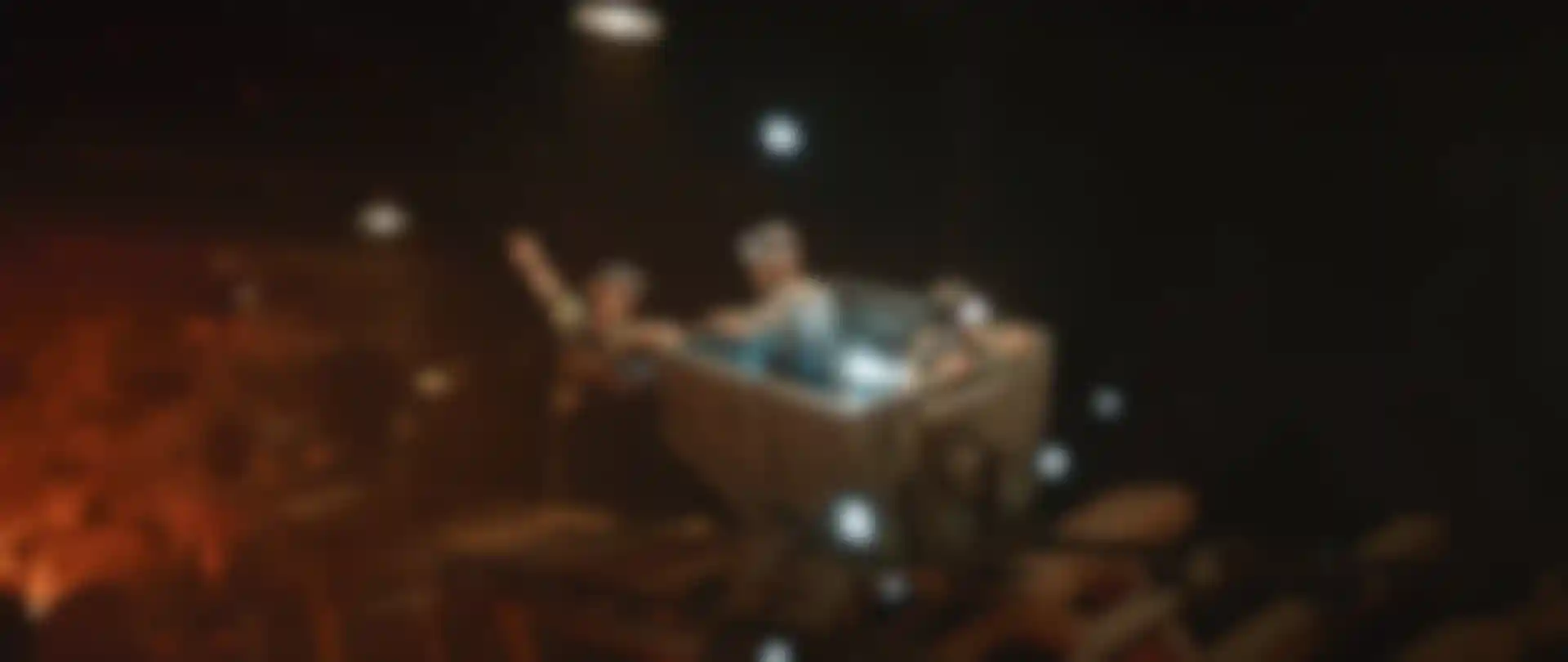
Andres was taking a break from 3D a few years back when he discovered Jones’ 3D Challenges: “So I bought a new computer and decided to jump into 3D again,” he says, explaining that his animation, “Indy Didn’t Make It,” began with an idea to have a mining cart racing through a cave.
“I was juggling a few ideas and, because I felt like diving into creature design and rigging, I decided to have a worm monster chasing the minecart,” says Andres who relied primarily on Cinema 4D and Substance Painter. “I knew that I was on the right track after a quick animation test, so I moved on to world and character design, as well as overall strategy to guide viewers’ eyes through the scene.”
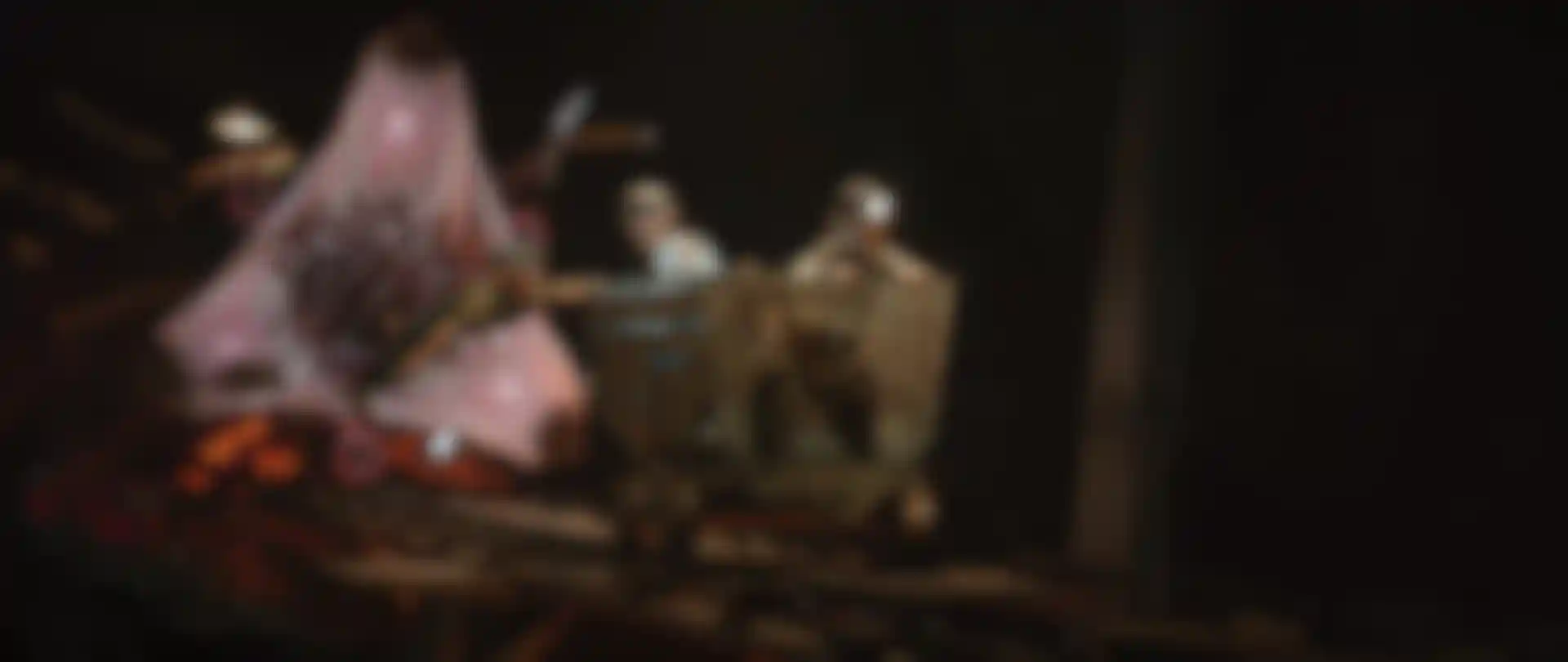
Rigging the worm was the most fun part of the project, he says: “This time, I faced rigging with a different mindset than I had before, telling myself that failing and starting over was absolutely fine. I started over many times and each time I felt smarter than before, gaining a bit more confidence with each iteration.”
Now less afraid of failing in 3D, he encourages other artists to adopt the mindset that failing and starting over is okay. “Now, I take time to mess around with tools in Cinema 4D to allow myself to make mistakes and figure out how to do things right before I start new projects.”
“Engina Monster”
Laimonas “Lee” Petrauskas is a freelance CGI and VFX artist who says he is currently “making as many bits of whacky art as my brain can produce!” That seems to be going well for him as he won second place in the Endless Engines contest for his otherworldly animation “Engina Monster.” Watch the longer, 15-second version here.
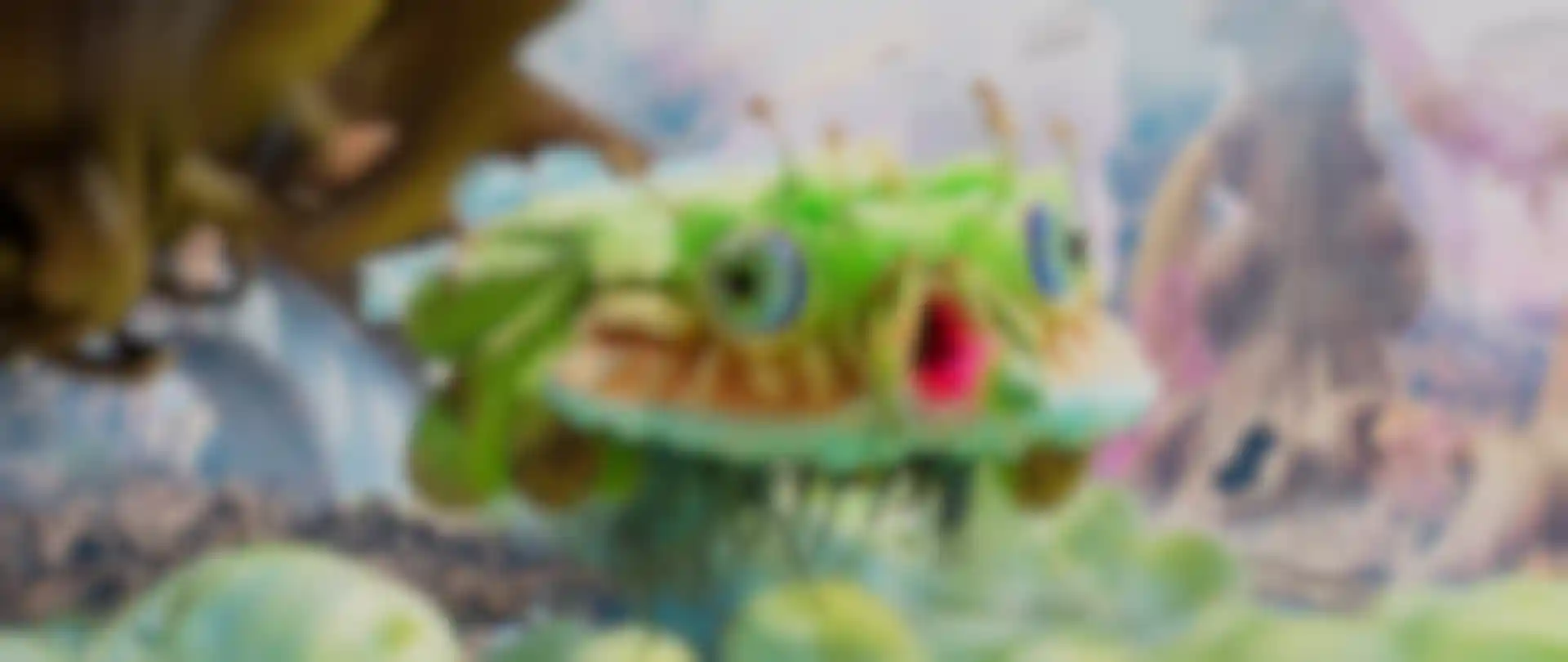
“I was immensely shaken when I found out my jelly floppers had successfully ascended all the way to second place overall,” he recalls, explaining how, after a sleepless night, he confirmed he’d really won second place and it wasn’t a hallucination.
After joining the contest a few weeks after it was announced, Petrauskas used a combination of C4D, Redshift, Adobe Creative Suite, Houdini and Marvelous Designer to realize his vision of something “squishy and wet.” He explains: “Eventually, I landed on a floppy, gelatinous creature and the story is a moment in its fantastical and difficult-to-explain life.”
Figuring out that story was the most challenging part of the animation, Petrauskas recalls. So, what began as a simple list of what he wanted to achieve, turned into a final story “that became apparent when my creature needed a purpose for entering the frame and having a camera documenting the event. It's a simple tale as old as time of a hunt and a reward, and it was heavily inspired by my constantly hungry wide-eyed cat and her clumsy garden hunts.”
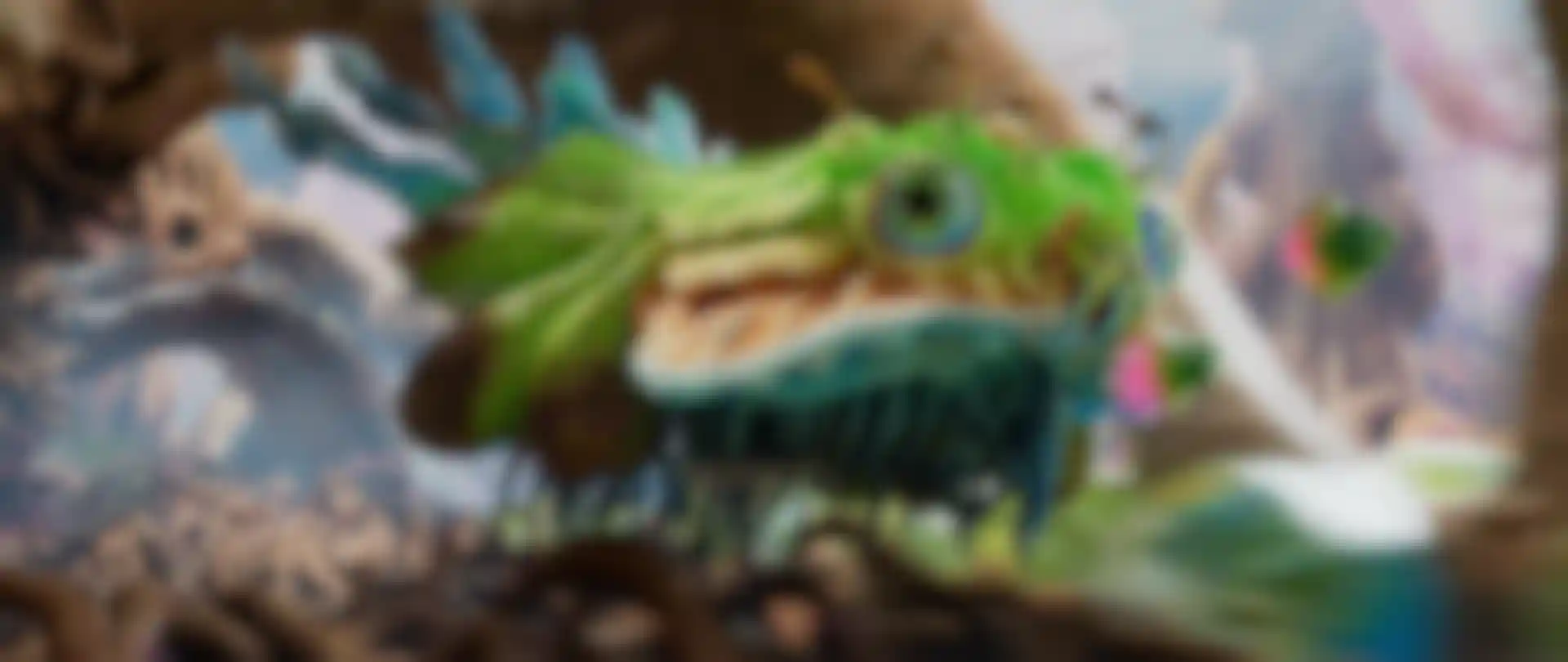
Petrauskas did set one “very significant” rule for himself before starting his project: “Avoid learning anything! That's right; stop learning and start creating,” he says. “It's something I’ve been fighting internally for a long time, and a pattern of incomplete projects still haunts me because it might be 70 percent learning a technique and 30 percent being creative. This time, I flipped that, and I can confirm it was a good time.”
“Endless Engines: Special Delivery!”
David Mellor is a 3D artist based in Portland, Oregon, and currently working at Wieden+Kennedy as a senior motion designer. A self-described anime and games nerd, he was inspired by the fun, colorful cartoons and games of his youth, particularly manga artist Akira Toriyama (“Dragon Ball,” “Sand Land”), and he wanted his Endless Engines submission to reflect that style.
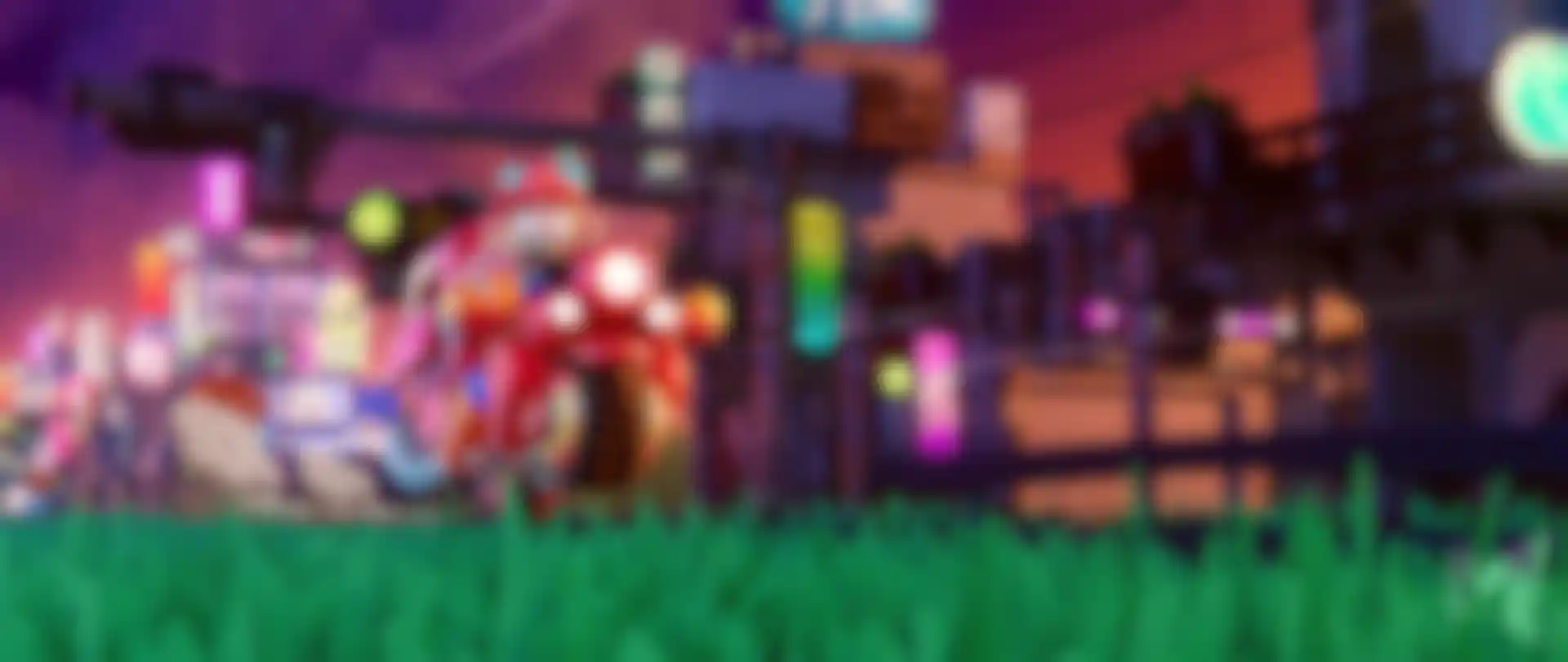
Using Cinema 4D, Substance, ZBrush, Mixamo and Redshift with extra passes in C4D’s Standard Renderer, Mellor created his “Endless Engines: Special Delivery” animation by first making a 3D sketch in VR using Substance 3D Modeler. “I was able to quickly sketch in 3D exactly what I was envisioning, creating the vehicle, character, buildings and other props in just a matter of days,” he recalls.
Mixamo was used to rig the main character, and the rest of the motion was done in Cinema 4D by following the provided contest template and mixing it with some simple animation. One of the most enjoyable parts of the project, he says, was figuring out what kind of story he could tell in just five seconds.
“I initially made a manhole as part of the road just to add some variation, but later decided to have a character holding it up, unknowingly making a ramp for the main vehicle to jump over. Because it was such an abrupt jump, I added little extra items, like donuts, that could fall out of the back as the bike got rattled on landing. Adding those little beats made the whole scene so much more interesting.”
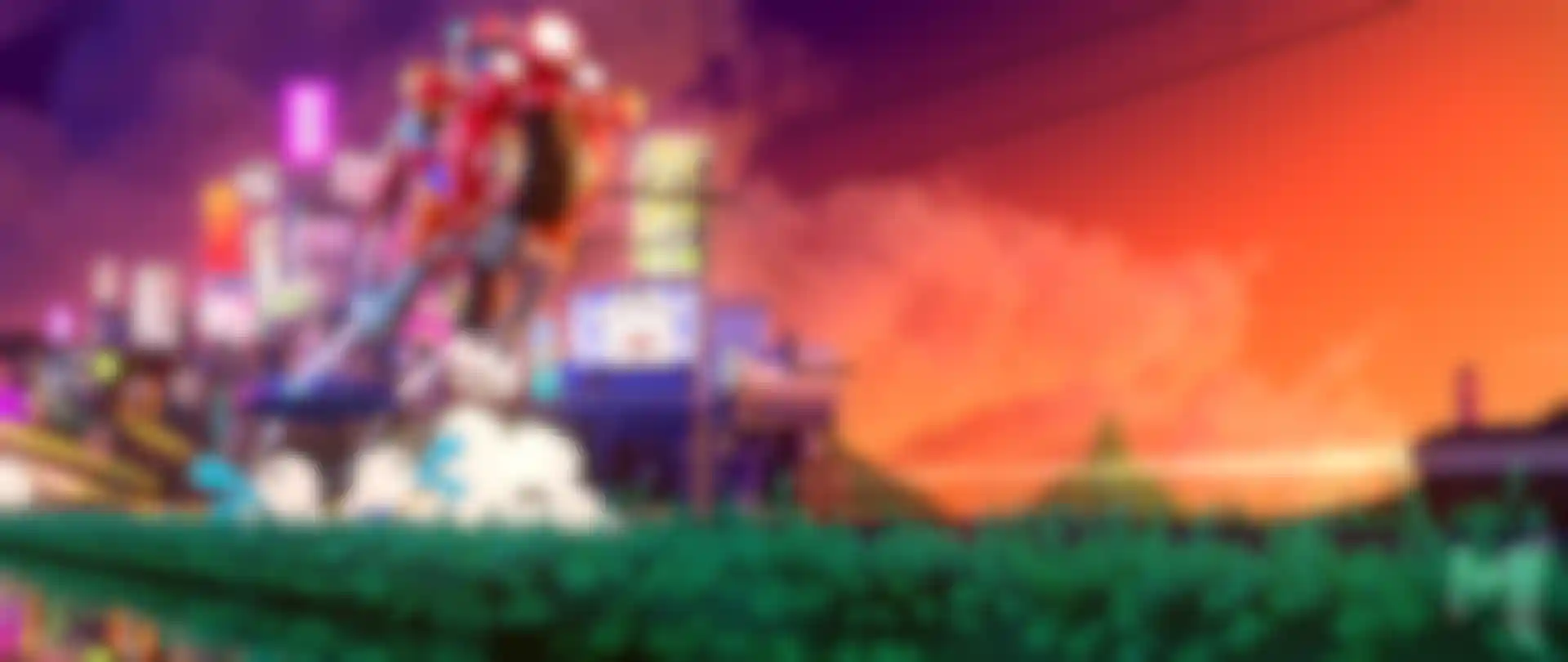
Mellor also liked exploring different visual styles as he worked, so what was initially thought of as a claymation-style render became more generally stylized in 3D over time. Having finished the 3D geometry early on, he had extra flex time to experiment and home in on a result that he didn’t initially expect but was extremely happy with in the end.
“I can’t stress enough how much optimizing my scene helped when navigating in the viewport, as well as speeding up my final render,” says Mellor. “I used instancing for all my buildings and other details, and rendered my stylized grass using a matrix object and Redshift’s particle renderer. All the optimized solutions worked perfectly inside the MoGraph cloner, and it cut my final render down to about two hours!”
Endless Engines
With over 15 years of experience in 3D and motion design, Guillaume Combeaud has worked on a diverse range of projects for broadcast media and live events. A Cinema 4D user since 2009, he has continuously developed his skills by using online resources and working on large-scale advertising projects.

For his Endless Engines submission, Combeaud wanted to integrate his “universe” and motion design style into the project. “I already had the desire to create a personal project featuring the two Porsches I used, as I adore their shape.” And this competition was the perfect opportunity to explore the concept.
While the project is complex, Combeaud prefers to keep things simple creatively, so he opted “for a universe with a certain sobriety, including a city that is mostly white, which allowed for greater clarity and readability since the action unfolds rapidly,” he says. The game-like setting also served the storyline, with the vehicle speeding along a racetrack and spending coins to transform.
Combeaud chose Cinema 4D and Octane as his primary tools for achieving the realistic look he was after, and he used C4D’s Voronoi Fracture to make the buildings appear and give the scene “a very motion design effect,” he says.

Basing the animation on the provided template was both fun and challenging, he says: “It's always enjoyable to start from a pre-established canvas to insert my ideas and style. In this case, though, the action was very fast, so adapting my animation to such a short amount of time was quite disorienting at first.”
Still, he is glad that participating in Pwnisher competitions has taught him how crucial it is to create a story that people can be immersed in quickly. So rather than focusing on making things beautiful, as he normally does, he plans to concentrate more on story and context for his next project. “My advice would be to pay close attention to that from the very beginning,” he says.
“Endless Engines 4x4”
An engineer by education and motion graphics designer by passion and profession, Nikola Botev likes to solve problems, observe reality and apply natural principles to his work.
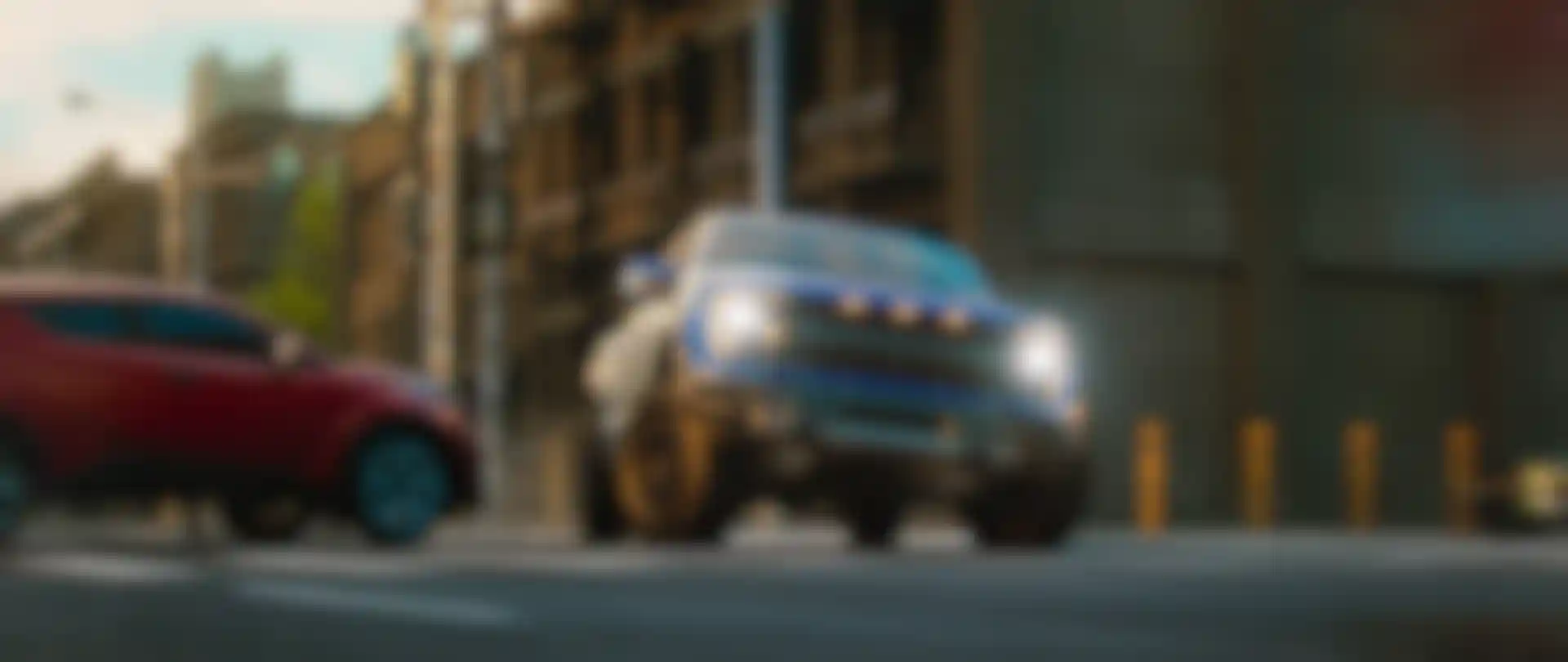
His animation “Endless Engines 4x4” was his first project of this scale and was inspired by hyper realism and the desire to make a render that had a live-action feel while also looking photoreal.
“The most difficult task was populating the scene with a lot of details that looked like they belonged in the environment while managing to do it in a reasonable timeframe,” he recalls. But once the scene was built, he says “the most fun part was moving on to texturing, lighting and animation and then to rendering to finally see what I had created.”

The need to have a solid workflow was one of the most important lessons Botev took away from the challenge. Having completed his animation, he believes it’s important to create simulations in a separate project to make it easier to make changes quickly.
Cinema 4D’s Pyro feature was also extremely helpful. “Using Pyro, I managed to make three separate smoke simulations in fairly big volumes in a single day. With my older workflow that would not have been possible.”
Endless Engines
Self-taught Australian 3D animator and motion designer Mohit Pattni has been using Cinema 4D for over 17 years and is always looking to learn new things and keep up with what the 3D community is creating.

As an homage to the moody, futuristic dystopia of “Blade Runner 2049,” his Endless Engines submission used lots of volume lights, sci-fi buildings, neon advertising and an iconic spinner vehicle.
Created using a wide range of Maxon One tools, including Cinema 4D, Redshift, Trapcode Particular and Magic Bullet Mojo II, the rain effect even caught the eye of Pwnisher. “I was quite happy that Clint appreciated the rain as it was a last-minute addition,” Pattni says.
But the effect also proved very challenging to accomplish in 3D because of the scale and speed of the scene. “I was about to give up on the rain but managed to bring it back in post-production using Trapcode Particular emitters, which provided a very convincing rain effect.”
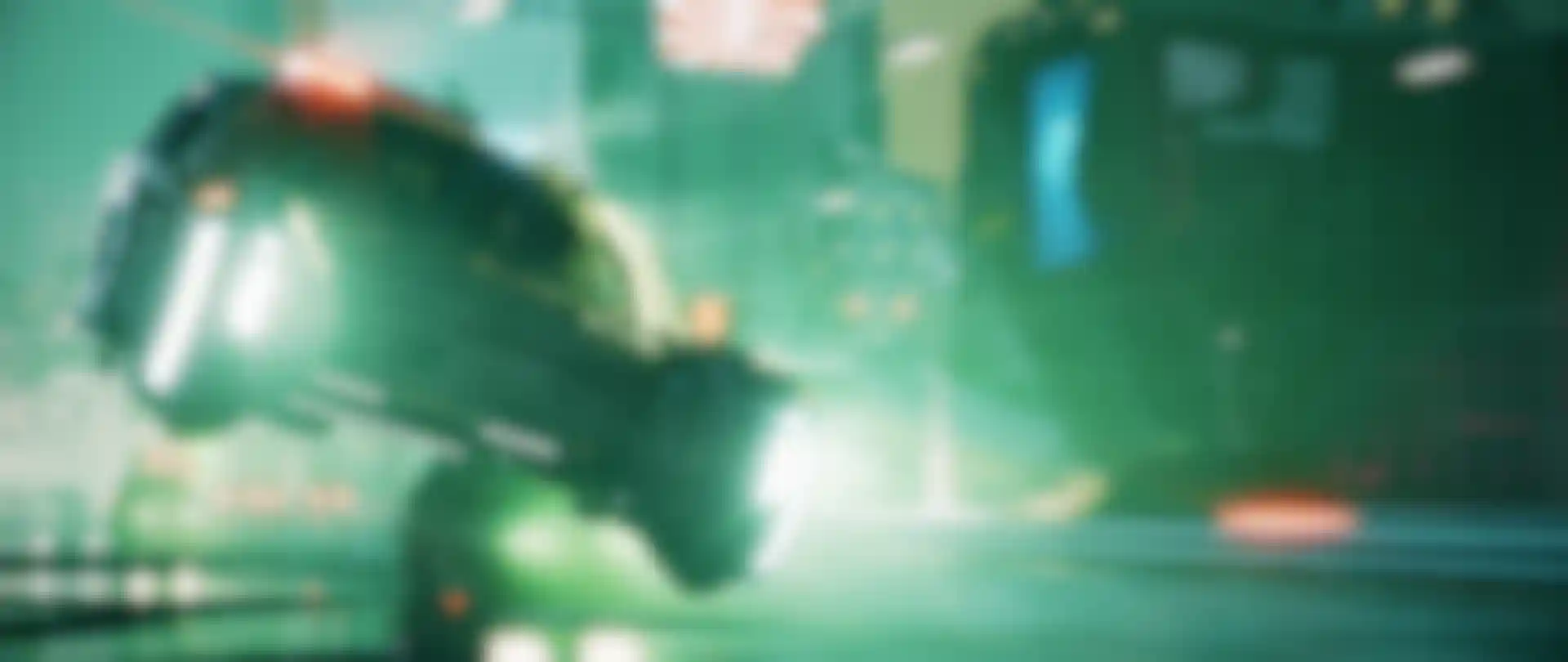
Having tried to simulate rain across the entire scene and finding it difficult to manage and art direct, he reminds artists that “post-production can work wonders.” Ultimately, by creating the rain in post, he was able to get the results he wanted without the headache of a managing a massive simulation.
“Star Scream Attack”
Canadian animator and 3D generalist Galen Johnson spent 20 years as a professional musical theater actor, all the while doing animation as a hobby, starting with stop motion. After trying his hand at in-camera VFX and finding himself unable to match his vision, he turned to 3D and never looked back. Cinema 4D made sense to Johnson very quickly and has been his go-to ever since.
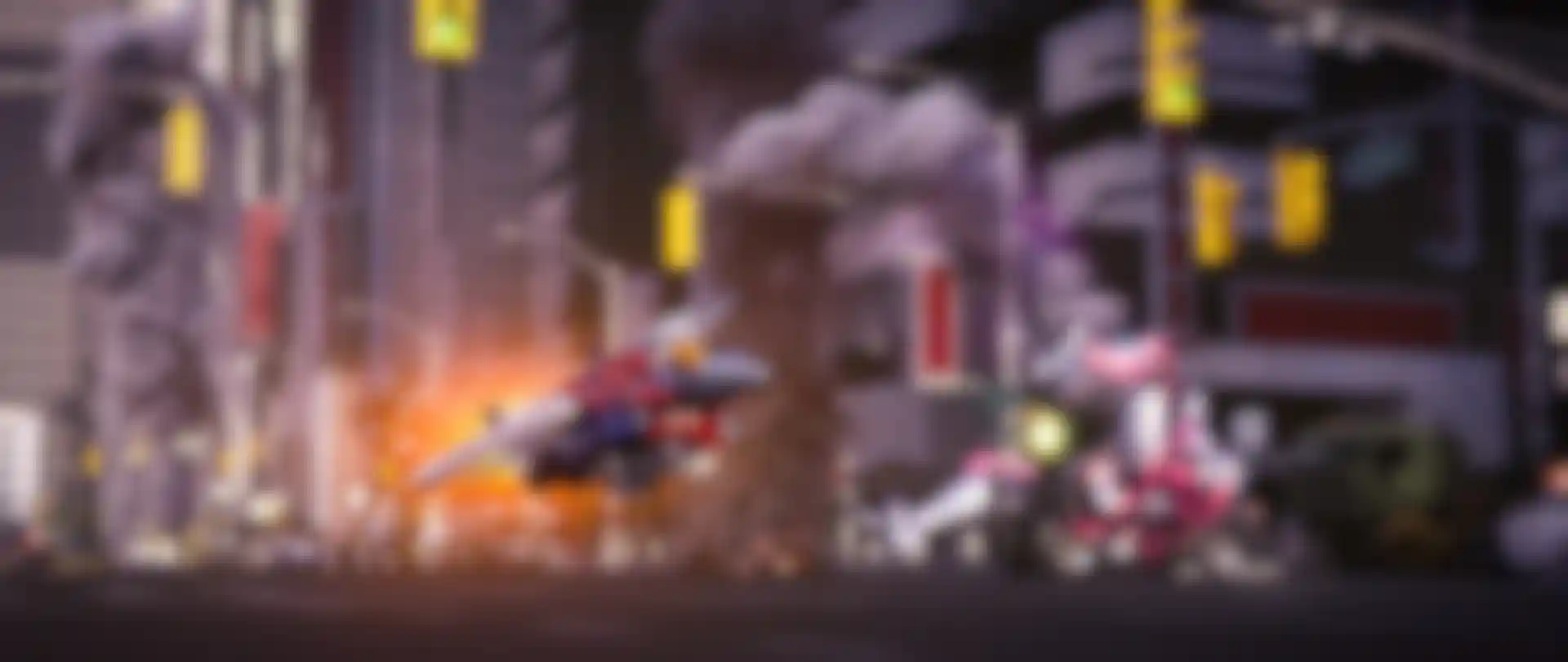
For his Endless Engines submission, “Star Scream Attack”, Johnson started out with a simple premise: Star Scream flies in, transforms, runs and then transforms again. “That's all I knew at the beginning, but I also knew it was something I could pull off,” he recalls.
After initially focusing a lot of time only on the character rigging and animation, and with just a few days before the contest deadline, he decided the animation would be set in an urban warzone.
“Cinema 4D’s Pyro tools really brought it all together, allowing me to create smoke trails, fires and even pavement debris easily and quickly,” Johnson explains.
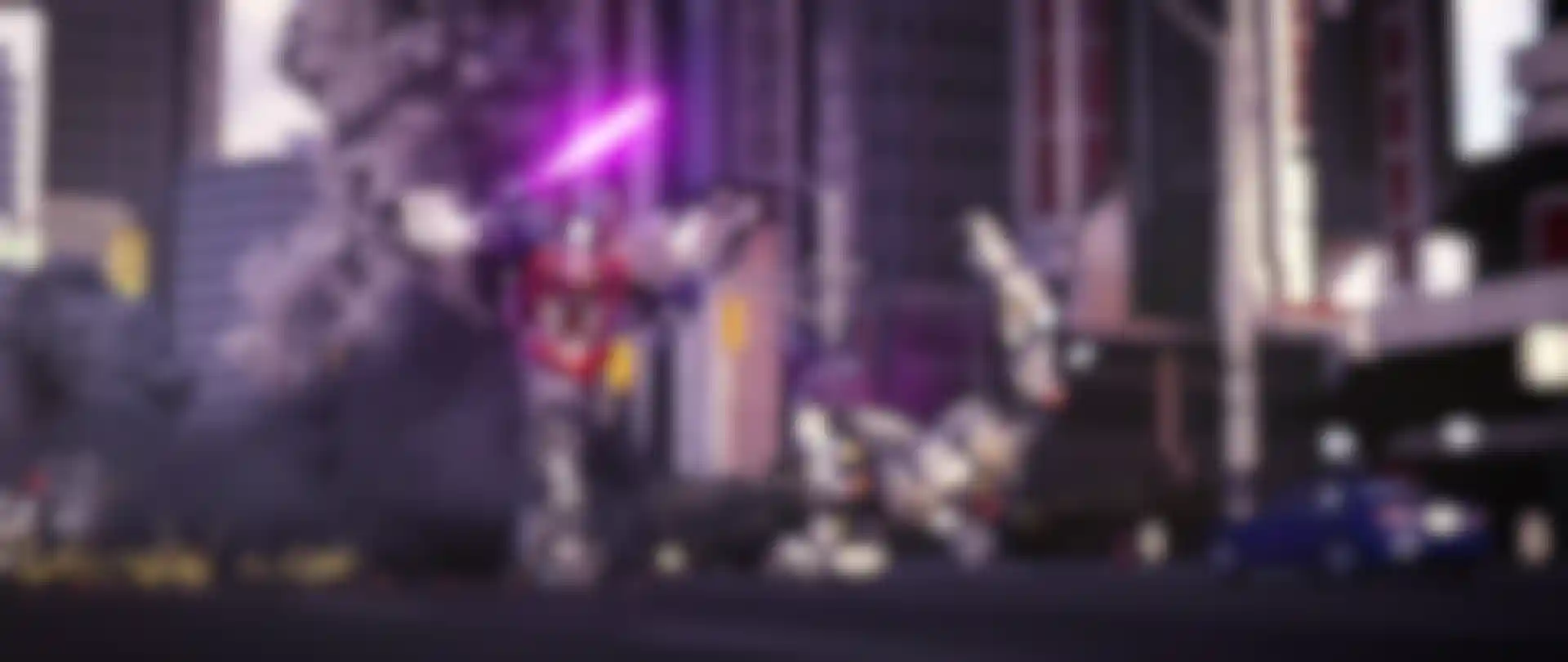
He most enjoyed completing the character animation and seeing the model move in the way he had envisioned. “Even before all the bells and whistles were added, that base animation of the transformer felt so satisfying.”
He’s also learned an important lesson from participating in these kinds of challenges. “There is no point to working on something this hard for a month if you don’t like your idea or feel inspired. You can make anything you want! So do it for yourself and make something you want to see, not necessarily something you think the judges will like or that you think will win. Art is subjective, but your passion will always shine through.”